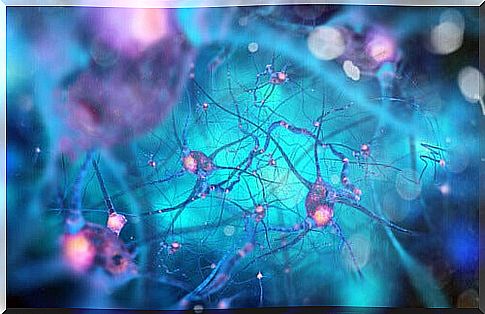Quiet People, Inner Calm In A World Of Noise

Quiet people are that puzzling point of balance in a hectic world. His serene gaze, his correct manners and his feet on the ground often attract the attention of others. There are those who assume that shyness hides behind them, but in reality, what underlies this profile is their good attitude towards life and a well-worked inner calm.
Albert Einstein said, with great success, that the monotony and loneliness of a quiet life is what drives the creative mind. However, curious as this calm image may seem to us, it is still little understood in our society. For example, Susan Cain reminds us of this in her books on the calm and / or introverted personality.
Thus, it is very common, for example, for that student who is always relaxed, peaceful and silent in the classroom to be perceived as lacking initiative, shy and withdrawn. They are children “without personality,” some teachers comment lightly. Because in our society, those who participate, who make noise and who have their voice are still valued are valued.
It must be said, however, that there are no better or worse personalities. Nothing is as rich for our world as that broad spectrum attitudinal and behavioral that we human beings show. Each one, in our own way, can contribute exceptional things to our reality. Although yes, we need mutual understanding and above all to be aware of the treasure that is hidden behind each psychological profile.

The brains of quiet people
Quiet people’s brains work differently. At first glance, this idea may attract more than one attention, but it must be said that it is not new. As early as the 6th years, the well-known personality psychologist Hans Eysenck introduced the term cerebral arousal threshold. This concept helped him to differentiate and explain why calmer people tend to differ so much from that more outgoing profile and / or open to experience, risk, challenge …
Thus, studies such as the one carried out in 2012 at Harvard University support the same hypothesis established by Eysenck at the time. Let’s see now what it is based on and what it explains:
- Extroverts need a higher level of dopamine to experience well-being and happiness. Hence, they seek to experience new sensations or have social contact more frequently to reach that level, that threshold of well-being.
- In the case of calm people, the opposite is true. They find well-being with a fair level of dopamine, when that equilibrium threshold is exceeded, they experience anxiety, pressure and exhaustion. Relaxed situations characterized by social and sensory harmony are the ones that give them the most satisfaction.
- Likewise, structural differences have been observed in the prefontral cortex of calm people. They have more gray matter. Something like this is linked to abstract thinking, which shows that this type of profile is more prone to reflection and introspection.

Habits of quiet people
That a person is calm does not mean much less that he is happier, competent or intelligent than those who are more restless, nervous or outgoing. It basically means that they see the world differently. He comes to tell us that they relate to their environment in another way and that their daily habits are somewhat different. Understanding them, being sensitive to this profile will undoubtedly allow us to understand them much more and why not, imitate some of their approaches if we consider them beneficial.
Characteristics of quiet people
- They enjoy connecting with loneliness. They know that those lonely scenarios are the best way to self-knowledge. It is that place where to awaken creativity, calibrate fears with potentialities and adjust new goals on the horizon.
- They are selective. Quiet people know well what suits them, what clouds them and what is better to put aside or take advantage of. Hence, they choose their relationships well and who they want in their life.
- You do not have to assume anything personally. Whoever is obsessed with disagreements, disagreements or failures in an intense way, suffers. You have to know how to relativize, establish a healthy distance between yourself and others, and understand that everything in life is a process, and the important thing is to keep moving forward as quickly as possible.

- See, listen, feel, learn … Nothing can be as enriching as connecting with our reality with all the senses. Quiet people have a calm attitude, but inside they are hungry for sensations and learning. However, his ideal learning channel starts from silence. From that gaze that knows how to observe, from those ears that listen carefully, discriminating sounds from mere noise …
- Slowly you live better. In a world of turmoil, calm people are the only ones who are not in a hurry. And they don’t have it because they know where they are going. They know each other well enough to know what their rhythm is, what their pause is, what their music is, and where they best go towards certain goals and objectives. The day to day experienced in a leisurely way has a better flavor for this profile.
To conclude, let’s not underestimate the power that calm people with a calmer attitude can have … From their inner calm and more relaxed charisma they can teach us great things. Sometimes the best revolutions start from silence.









